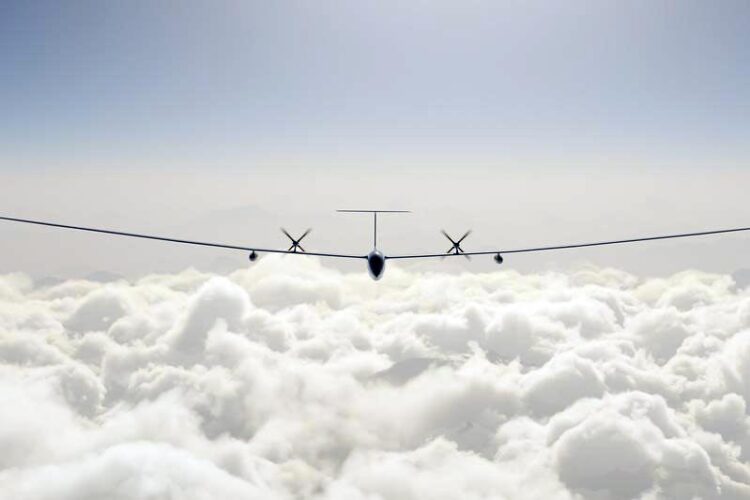5G Networks, Disaster Prevention, Agriculture

The picture shows a conceptual ground station for HAPS, with similarities to an air traffic controller’s workstation. Demonstrators like this or similar are being developed in the joint project “ObeLiSk”. Image credits: Leichtwerk Research GmbH
… high-altitude pseudo-satellites in Action
A flight planning system to ensure nationwide coverage with information from high altitudes.
High Altitude Pseudo Satellites (HAPS) are unmanned aerial vehicles that fly in the stratosphere. They provide for instance earth observation data and can be used for telecommunications applications such as 5G. The goal of project OBeLiSk is to develop, for the first time, an operational concept for safe and efficient airspace integration of HAPS. To ensure safety in the airspace, Technische Universität Braunschweig is involved as a project partner on the development of air traffic control concepts for HAPS.
HAPS are fully automated systems and are, in simple terms, satellites that move much closer to Earth. Due to their high local loitering capability as well as their proximity to the Earth, HAPS can be used for observation purposes or for telecommunication applications. Thus, they provide important intelligence day and night – for example, for search and rescue missions, disaster relief, monitoring of environmentally relevant events, or agriculture. HAPS can also make a flexible and efficient contribution to the nationwide coverage of the 5G mobile network.
The special flight performance of HAPS in terms of speed, climb and descent rates, and long flight duration require careful and thorough flight planning. However, changing weather conditions are a particular challenge, requiring continuous and efficient optimization of route planning during the flight. A team consisting of experts of Leichtwerk Research GmbH, Unisphere GmbH, DFS Deutsche Flugsicherung GmbH, Deutscher Wetterdienst and the TU Braunschweig aims to develop concepts, procedures and rules for the dynamic operation of HAPS to meet this challenge. Special consideration will be given to the operator’s requirements for route planning and optimization, as well as optimization at the controller’s workplace.
The Institute of Flight Guidance (IFF) at TU Braunschweig researches methods and technical means to support humans in the safe handling of air traffic control tasks. This is reflected in the IFF’s goals as a project partner in the ObeLiSk project to enable interoperability between HAPS and future air traffic control concepts. To this end, requirements for air traffic control concepts and HAPS will be formulated to enable safe and effective operation of HAPS. In the further course of the project, corresponding concepts and the necessary human-machine interfaces will be implemented prototypically and validated using demonstrators.
Project data:
The OBeLiSk project is funded by the German Federal Ministry for Economic Affairs and Energy (BMWi) as part of the aeronautics research program. The funding of the TU Braunschweig amounts to 647,500 Euro. The duration of the project is four years (01.07.2020-31.07.2024). In addition to the TU Braunschweig, partners in the joint project are Leichtwerk Research GmbH, Deutscher Wetterdienst, Unisphere GmbH and DFS Deutsche Flugsicherung GmbH.
Contact
Andrés Arango Pérez
Technische Universität Braunschweig
Institute of Flight Guidance (IFF)
Hermann-Blenk-Str. 27
38108 Braunschweig
Germany
Phone: +49 531 391-9884
E-Mail: a.arango@tu-braunschweig.de
Björn Blom
Technische Universität Braunschweig
Institute of Flight Guidance (IFF)
Hermann-Blenk-Str. 27
38108 Braunschweig
Germany
Phone: +49 531 391-9858
E-Mail: b.blom@tu-braunschweig.de
Media Contact
All latest news from the category: Information Technology
Here you can find a summary of innovations in the fields of information and data processing and up-to-date developments on IT equipment and hardware.
This area covers topics such as IT services, IT architectures, IT management and telecommunications.
Newest articles

Superradiant atoms could push the boundaries of how precisely time can be measured
Superradiant atoms can help us measure time more precisely than ever. In a new study, researchers from the University of Copenhagen present a new method for measuring the time interval,…

Ion thermoelectric conversion devices for near room temperature
The electrode sheet of the thermoelectric device consists of ionic hydrogel, which is sandwiched between the electrodes to form, and the Prussian blue on the electrode undergoes a redox reaction…

Zap Energy achieves 37-million-degree temperatures in a compact device
New publication reports record electron temperatures for a small-scale, sheared-flow-stabilized Z-pinch fusion device. In the nine decades since humans first produced fusion reactions, only a few fusion technologies have demonstrated…





















